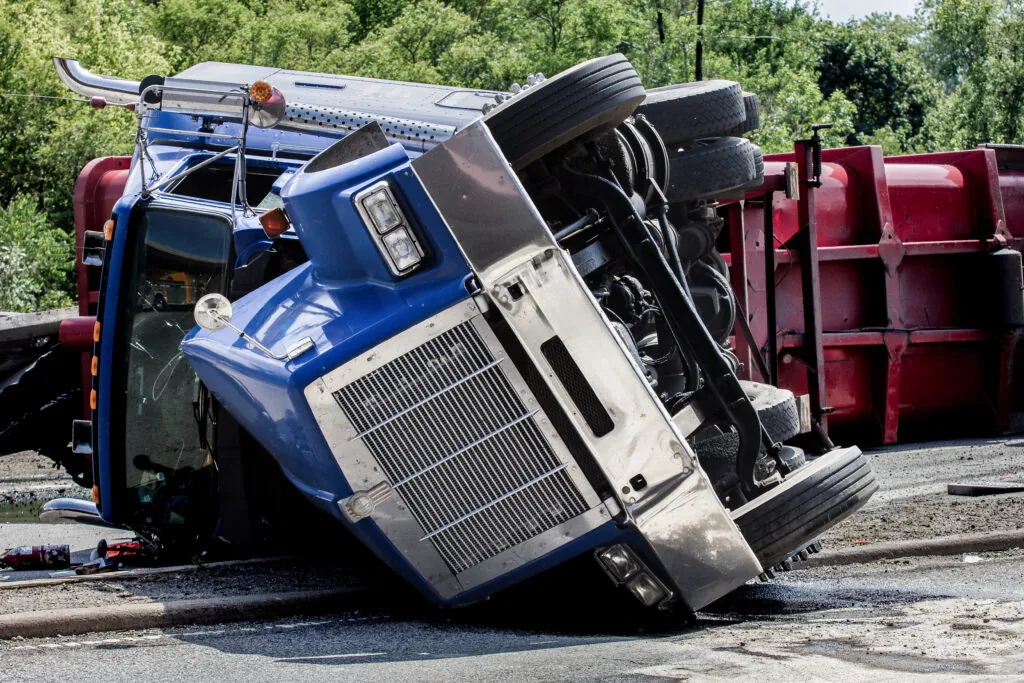Raleigh, NC: (919) 277-9299

Though most crashes involving large trucks are caused by operator errors, sometimes the accident investigations reveal defective parts contributed. The freight company might use this information to try to escape liability or explain the crash as an unusual, unavoidable failure. But discovering defective equipment doesn’t always absolve the wrongdoing. Many parties can share liability, including the part or vehicle manufacturer, the trucking company, its mechanics, and/or the driver. Truck accidents must be investigated thoroughly to name all appropriate parties in the litigation.
Truck accident investigations require, at minimum, comprehensive review of the truck driver’s actions and the freight company’s operational practices, and when faulty equipment is involved, inquiries must also be made into the part’s design, marketing, and production. This isn’t something most individuals are equipped to do alone, but the attorneys at Bell Legal Group are here to help. Our law firm understands the nuances of commercial vehicle crashes and defective product claims.
South Carolina’s Product Liability Laws for Defective Truck Parts
Attorneys should investigate the accident to determine if there was a defect in design or manufacturing that may have caused the trucking accident.
- Design – A product’s design is inherently dangerous and caused injury.
- Manufacturing – Flawed production or assembly resulted in a defective product which caused an injury.
- Failure to Warn – A product’s improper labeling, advertising, or marketing caused an injury.
The Importance of Investigating Trucking Accidents
It’s essential for a lawsuit to name all responsible parties correctly to recover all available damages. Even if a defective suspension system caused the vehicle to veer unpredictably into your traffic lane, additional parties may be to blame beyond the manufacturer. It’s essential to evaluate the scene, inspect the vehicles, and review the trucking company’s logbooks to determine the exact causes of an accident and build your case around the truth.
If you assume evidence the size of a semi truck can’t disappear—think again. Trucking companies can try to hide or repair a commercial vehicle after a collision to conceal the cause and prevent investigations. The attorneys at Bell Legal Group understand these tactics and will ensure all evidence is preserved.
Identifying Defective Systems and Failing Parts
There can be many different causes of trucking accidents. The challenge is that these can be tied to nearly any part of the vehicle, including:
- Tires and wheels
- Brakes systems
- Mirrors
- Steering systems
- Headlights, taillights, and reflectors
- Hitching systems
- Suspension systems
The attorneys at Bell Legal Group will investigate each potential cause of the accident to determine what actually happened. Some methods to consider when identifying an equipment failure or faulty system include:
Examine the Accident Scene
Skid marks, tire fragments, and debris distribution can speak volumes about the moments leading up to a crash. Investigators can use these cues to determine the impact point and direction the vehicles moved after colliding to identify possible causes or equipment that may have failed.
Inspect the Commercial Vehicle
A visual inspection can identify worn brake pads, fluid leaks, and damaged suspension system elements. Faulty tires and blowouts also cause accidents, so investigators will look at tread depth, damaged sidewalls, and other features. If cargo is still secured, you can see whether it was properly tied down or if shifting may have contributed to the crash. If the accident involved a vehicle going underneath the back or side of a truck’s trailer, investigators can review the underride guard to determine whether that was defective.
Review for Manufacturer Complaints and Recalls
The Federal Motor Carrier Safety Administration (FMCSA) maintains a database for complaints against commercial carriers. These can include company- and driver-related violations and deficient electronic logging device (ELD) manufacturers. An attorney should access this to explore whether there have been past issues with a specific ELD or if the freight company has a reputation for ignoring safety regulations. The National Highway Traffic Safety Administration (NHTSA) also collects information on safety recalls and reports for commercial vehicle parts. Litigators must review these records for ongoing issues that may have been neglected and instigated the crash.
Analyze Trucking Company Logbooks
Freight companies are required to keep diligent inspection, repair, and maintenance records. Litigators should find evidence in the logbook for faulty or frequently replaced parts. The driver’s reports should name any defects found during inspections, and the mechanic should sign off on repairs. This paper trail can be invaluable to litigators in determining whether trucking company employees acted responsibly or violated regulations, and whether a manufacturing issue could be to blame.
If you’ve been injured by a commercial vehicle, let Bell Legal Group’s truck accident attorneys help!
